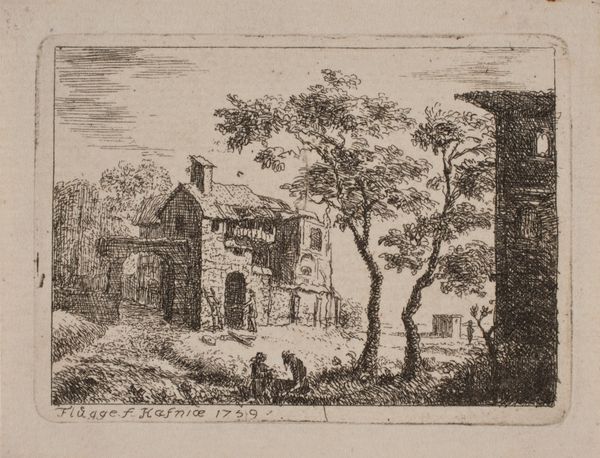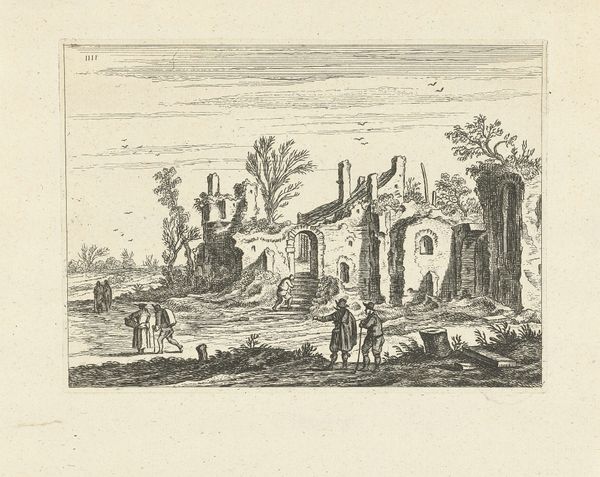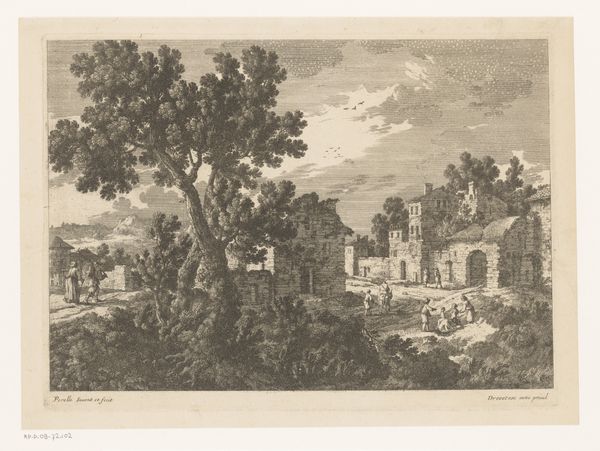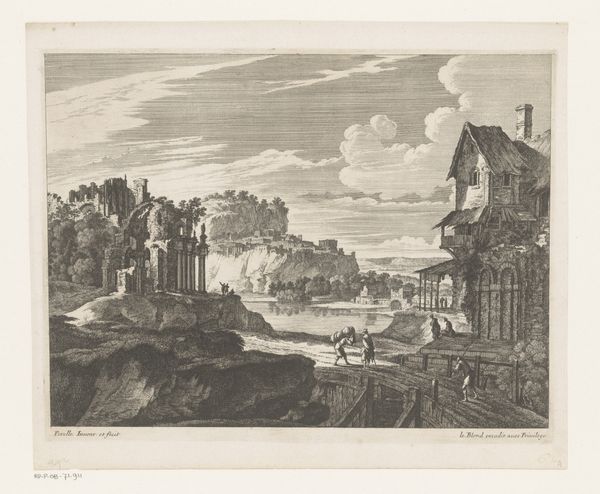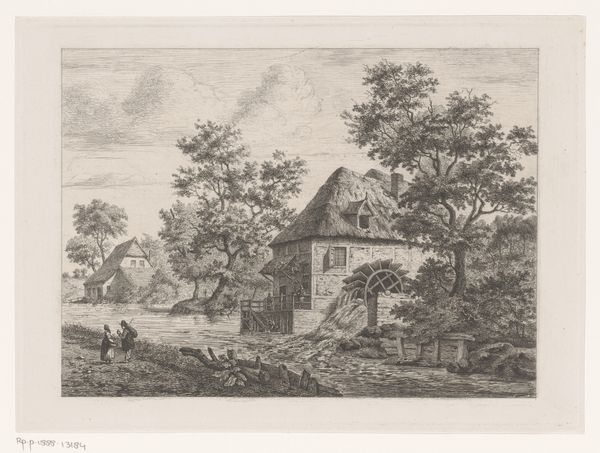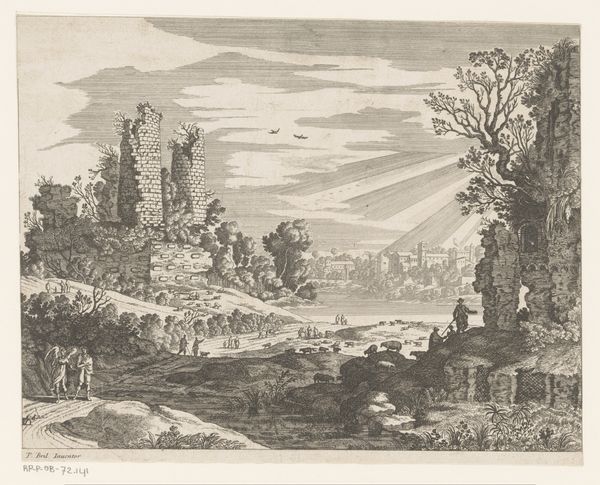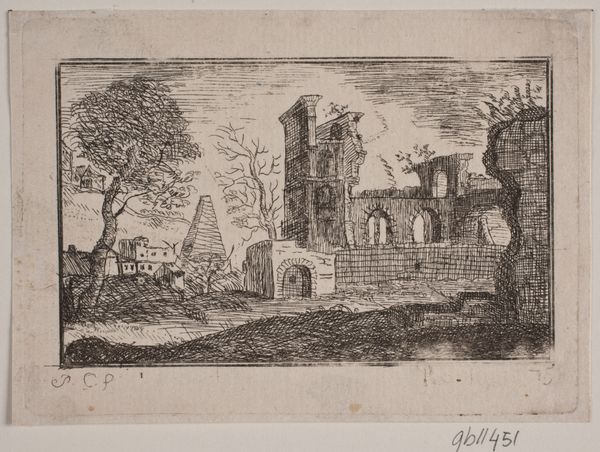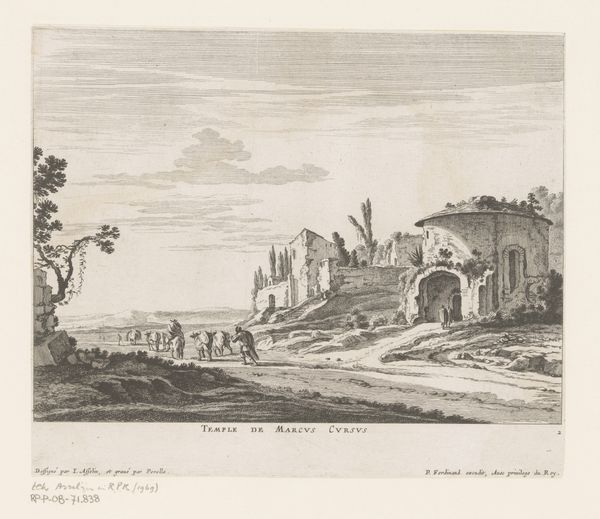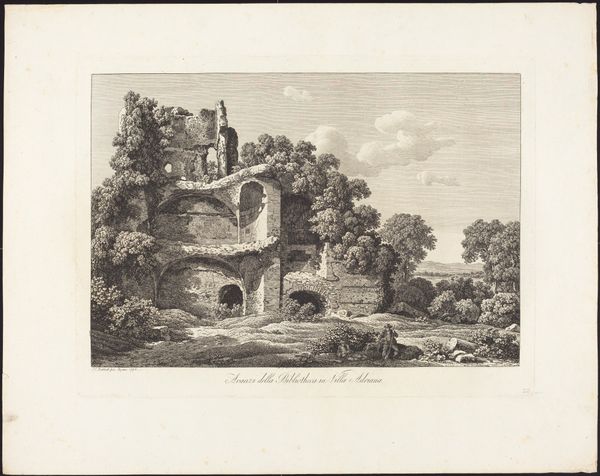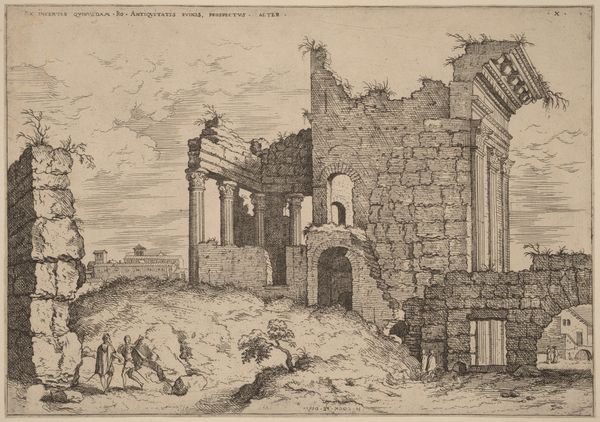
print, engraving
#
medieval
#
baroque
#
pen drawing
# print
#
landscape
#
line
#
history-painting
#
engraving
Dimensions: height 246 mm, width 315 mm
Copyright: Rijks Museum: Open Domain
Editor: This engraving, "Ruïne met een groep vrouwen en kinderen," attributed to Adam Perelle and dating roughly from 1613 to 1695, depicts a ruined structure teeming with figures. I’m immediately struck by the contrast between the crumbling architecture and the everyday activities of the people. What underlying narratives might Perelle be exploring here? Curator: I see this image as a commentary on power and fragility. Note how the imposing architecture, though in decay, still dominates the landscape and the lives within it. What does it mean to depict women and children within these ruins? Consider how historical narratives often omit or marginalize women's experiences, and then contemplate this piece again. Editor: That’s a fascinating perspective. It suggests a dialogue about resilience in the face of societal upheaval, maybe about who gets to write history. It makes me wonder, could the women represent continuity amid the ruins, a reclaiming of space? Curator: Precisely! The ruins become more than just stone and mortar. They are sites of potential reinvention. Do you think there's something inherently gendered in associating ruins with a "feminine" energy of reclamation? Editor: It’s definitely worth considering. Perhaps the print speaks to the power structures inherent in landscape art itself; the gendering and conquering of natural space. The figures bring it back to reality, questioning that dominance. Curator: Exactly! Art of this period isn’t just about aesthetics; it’s deeply embedded in social and political contexts, making this a surprisingly resonant piece. It causes us to think deeply about the construction and reconstruction of meaning over time. Editor: I never considered this landscape could spark so much social commentary. It shows how art is always talking to contemporary audiences about societal anxieties and aspirations. Curator: Absolutely. Examining these works with an intersectional lens, understanding gender, race, class, and power dynamics, unlocks layers of meaning we might otherwise miss. I hope this image empowers you to keep asking difficult questions of the past.
Comments
No comments
Be the first to comment and join the conversation on the ultimate creative platform.
